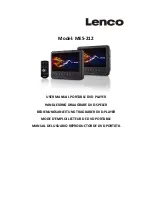
Publication No. 980935 Rev. A
3152B User Manual
Baseline –
The Baseline parameter affects the output
characteristics in one of the interrupted run modes (i.e., triggered,
burst). In this case this parameter defines where the signal idles
between triggers. There are two options: CW and DC. The DC
option will set the idle state to a DC level, meaning that in between
triggers, the output resides on a DC level and generates modulation
when a trigger is accepted. The CW is similar except the signal
idles on the pre-trigger CW frequency setting, executes the
modulation upon receipt of a legal trigger signal and returns to
continuous CW frequency output.
FSK
The FSK group contains parameters that control the frequency shift
keying function. These parameters are: control data, “0” and “1”
frequencies, baud rate, and marker position.
Control Data –
The Control Data button in the FSK group provides
access to the data string that controls the sequence of base
frequency and shifted frequency. It contains the list of “0” and “1”
values that the output will repeatedly follow for its frequency shift
keying sequence advance as programmed.
Figure 4-17, FSK/PSK/ASK Modulation Panel
“0/1” Frequency –
In FSK, the carrier waveform (CW) has two
frequencies: an initial frequency level which is set by the “0”
frequency parameter and shifted frequency which is set by the “1”
frequency. The control data table has a list of “0” and “1” values that
flag when the frequency shifts from base to shifted frequency.
Baud –
The baud parameter sets the rate at which the generator
steps through the sequence of the FSK Control Data bits.
Marker Index –
The marker index programs a step in the control
data string to output a pulse at the SYNC output connector. The
SYNC State button must be turned on to generate the FSK marker
output.
EADS North America Test and Services
ArbConnection 4-25
Artisan Technology Group - Quality Instrumentation ... Guaranteed | (888) 88-SOURCE | www.artisantg.com
















































